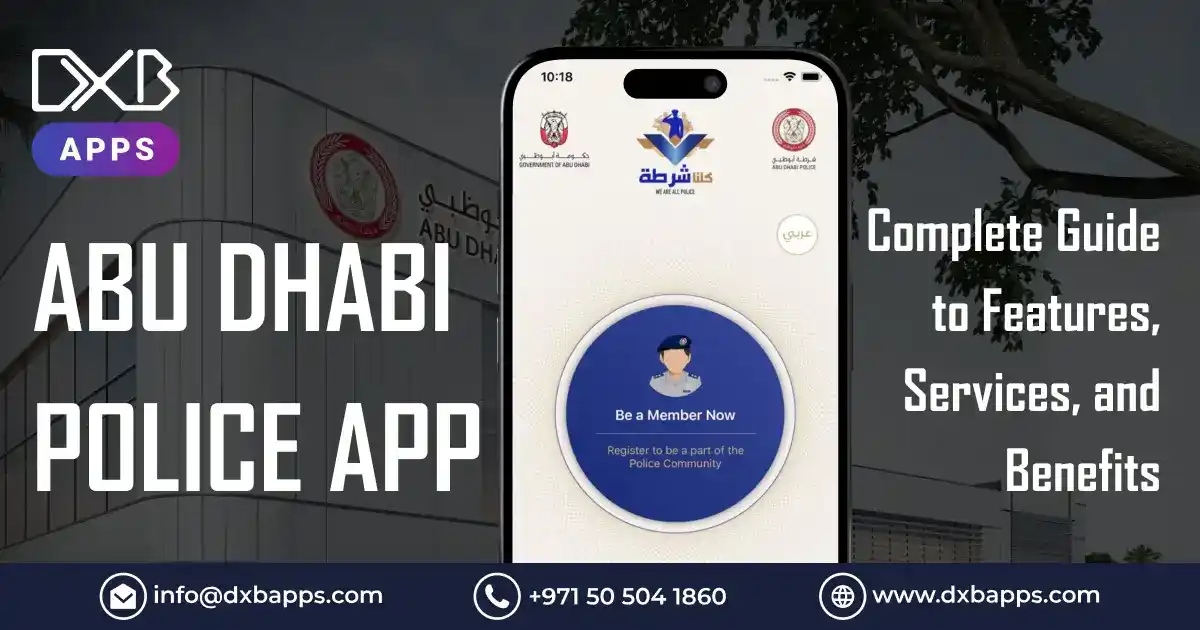1. Introduction
In today's digital era, mobile apps have become an integral part of our daily lives. With the growing competition in the mobile app market, it is crucial for businesses in Abu Dhabi to prioritize enhancing the user experience (UX) of their mobile applications. This article explores the best mobile app development practices that can help in creating exceptional user experiences and achieving success in the mobile app market.
Mobile app development is not just about creating functional apps; it is also about crafting experiences that users will love and find valuable. By focusing on user experience, businesses can improve customer satisfaction, increase user engagement, and foster long-term loyalty. In Abu Dhabi, where mobile app usage is on the rise, implementing the right practices to enhance user experience becomes even more critical.
2. Understanding User Experience in Mobile Apps
User experience refers to the overall experience a user has while interacting with a mobile application. It encompasses various aspects such as usability, design, performance, and functionality. A positive user experience not only ensures customer satisfaction but also fosters user loyalty and increases app retention rates.
To understand user experience better, it is essential to put yourself in the shoes of the users. Consider their needs, expectations, and pain points when designing and developing mobile apps. By empathizing with users, you can create apps that address their specific requirements and deliver a seamless and enjoyable experience.
3. Importance of Enhancing User Experience
Enhancing user experience should be a top priority for mobile app developers and businesses. A well-designed and user-friendly mobile app can differentiate a brand from its competitors, attract and retain users, and drive business growth. Positive user experiences lead to higher app ratings, positive reviews, and increased app downloads.
In Abu Dhabi's competitive mobile app market, where users have a plethora of options, providing a superior user experience becomes a key differentiator. Users are more likely to choose apps that are easy to use, visually appealing, and offer valuable features. By prioritizing user experience, businesses can gain a competitive edge and create a loyal user base.
4. User-Centric Design Principles
To create a compelling user experience, developers should follow user-centric design principles. These principles revolve around understanding user needs and preferences and designing apps that align with them. By prioritizing the user throughout the development process, businesses can create intuitive and user-friendly mobile apps.
4.1 Consistency and Simplicity
Consistency in design elements, such as colors, fonts, and buttons, helps users navigate the app seamlessly. By maintaining a consistent visual language, users can quickly understand and interact with different app screens. Simplicity in the app's interface and functionality reduces cognitive load and improves usability. Complex or cluttered interfaces can confuse users and hinder their overall experience.
4.2 Responsive Design
With the proliferation of various mobile devices and screen sizes, it is crucial to ensure that mobile apps are responsive. Responsive design allows the app to adapt to different screen sizes and orientations, providing a consistent experience across various devices. Whether users are accessing the app on a smartphone or tablet, they should be able to interact with it effortlessly.
4.3 Intuitive Navigation
Intuitive navigation is key to a positive user experience. Users should be able to find information and perform actions effortlessly. Clear and logical navigation paths enhance user satisfaction and prevent frustration. Appropriate use of menus, buttons, and gestures can make navigation intuitive and user-friendly.
5. Optimal Performance and Speed
Mobile apps should be optimized for performance and speed. Slow-loading screens or lagging interactions can frustrate users and lead to app abandonment. Optimizing code, compressing images, and minimizing network requests can improve app performance. Additionally, leveraging caching mechanisms and implementing efficient algorithms can enhance the speed and responsiveness of the app.
When it comes to user experience, every second counts. Users expect apps to respond quickly and smoothly, without any noticeable delays. By prioritizing performance optimization, businesses can ensure that users have a seamless and enjoyable experience while using their mobile apps.
6. Seamless Onboarding Process
The onboarding process is the user's first interaction with the app. It sets the tone for their entire app experience. A smooth onboarding process is crucial for user retention. Guided tutorials, personalized welcome messages, and clear instructions can help users understand the app's features and functionalities quickly.
During the onboarding process, it is essential to gather only the necessary information from the users. Long and complex registration forms can discourage users from completing the onboarding process. By minimizing friction and keeping the onboarding process simple and straightforward, businesses can ensure a positive first impression and encourage users to continue using the app.
7. Personalization and Customization
One-size-fits-all approaches are no longer sufficient in mobile app development. Users expect personalized experiences that cater to their specific needs and preferences. Mobile apps that offer personalized experiences based on user preferences and behavior are more likely to engage and retain users. Features such as customizable interfaces, personalized recommendations, and user-specific settings enhance the overall user experience.
Personalization can be achieved by leveraging user data and employing machine learning algorithms to deliver tailored content and recommendations. By understanding user preferences and providing personalized experiences, businesses can create deeper connections with users and foster long-term engagement.
8. Error Handling and Feedback Mechanisms
No app is perfect, and users may encounter errors or face difficulties while using an app. Proper error handling and feedback mechanisms are essential for a seamless user experience. Clear error messages, tooltips, and user-friendly forms can help users understand and rectify errors easily.
In addition to error handling, businesses should provide mechanisms for users to provide feedback. Incorporating feedback channels such as in-app surveys or support tickets allows users to voice their concerns, suggest improvements, and report bugs. Promptly addressing user feedback demonstrates a commitment to improving the app and enhancing the user experience.
9. Mobile App Security
Ensuring the security of user data and protecting against potential threats is vital for building trust with app users. Mobile apps often handle sensitive user information, such as personal details, payment information, and passwords. Implementing secure authentication methods, encrypting sensitive data, and regular security audits contribute to a positive user experience.
Users should feel confident that their data is safe and protected while using the app. By prioritizing app security, businesses can establish trust with their users and mitigate potential risks.
10. Testing and Iteration
Thorough testing of the app across various devices and platforms is necessary to identify and fix bugs and usability issues. User testing, beta testing, and quality assurance processes should be an integral part of the app development lifecycle. By gathering feedback from real users and addressing any issues, businesses can ensure that their app meets user expectations and delivers a seamless experience.
Iteration based on user feedback and analytics is essential for continuously improving the user experience. Regular updates and enhancements based on user insights contribute to the long-term success of the app.
11. Integration of Analytics and User Feedback
Integrating analytics tools and gathering user feedback allows developers to gain insights into user behavior and preferences. Analytics can provide valuable information about user interactions, popular features, and user retention rates. By analyzing this data, businesses can identify areas for improvement and make data-driven decisions to enhance the user experience.
User feedback, whether through surveys, ratings, or reviews, provides direct insights into user satisfaction and pain points. Actively listening to user feedback and incorporating it into app updates helps businesses address user needs and deliver a better overall experience.
12. Regular Updates and Maintenance
Mobile apps should undergo regular updates and maintenance to remain relevant and meet evolving user expectations. Updates can include bug fixes, performance optimizations, new features, and security enhancements. Regular maintenance ensures that the app remains compatible with the latest devices and operating systems, providing a smooth user experience.
Keeping the app up-to-date showcases a commitment to quality and demonstrates that the business values its users. Regular updates also present opportunities to introduce new functionalities or address user feedback, further enhancing the user experience.
13. Mobile App Monetization Strategies
Monetizing mobile apps is a common practice for businesses, but it should not compromise the user experience. App developers and businesses can explore various monetization strategies such as in-app purchases, subscriptions, advertisements, or sponsored content. However, it is crucial to balance monetization efforts with the user experience.
Intrusive or irrelevant ads can disrupt the user experience and lead to user dissatisfaction. Businesses should carefully select monetization strategies that align with the app's purpose and user expectations. By providing value through monetization efforts and maintaining a positive user experience, businesses can generate revenue while keeping users engaged.
14. Trends in Mobile App Development
Staying updated with the latest trends in mobile app development is essential for creating innovative and user-friendly apps. Embracing emerging technologies and design patterns can help businesses stay ahead of the competition and deliver exceptional experiences. Some current trends in mobile app development include augmented reality (AR), virtual reality (VR), artificial intelligence (AI), and voice-enabled interfaces.
Integrating these technologies into mobile apps can provide unique and engaging experiences for users. However, it is essential to evaluate the relevance and value of these trends based on the app's target audience and purpose.
15. Conclusion
Enhancing the user experience in mobile apps is vital for businesses in Abu Dhabi to succeed in the competitive app market. By following user-centric design principles, optimizing performance and speed, providing seamless onboarding, personalization, error handling, security measures, regular updates, integrating analytics, and staying updated with industry trends, businesses can create engaging mobile apps that attract and retain users.
Delivering a superior user experience goes beyond the functional aspects of an app; it involves creating an emotional connection with users and providing value at every interaction. By continuously prioritizing and refining the user experience, businesses can cultivate user loyalty, drive growth, and establish a strong presence in the mobile app market.















